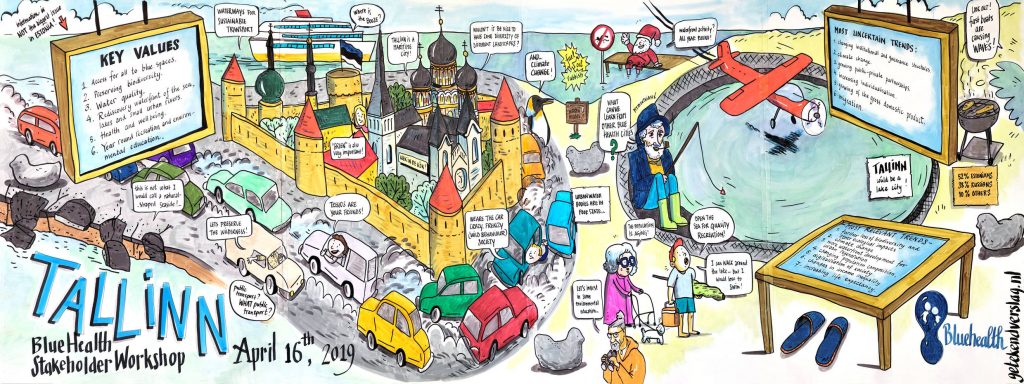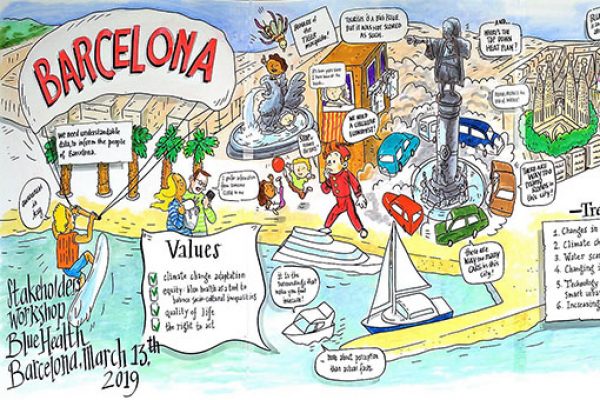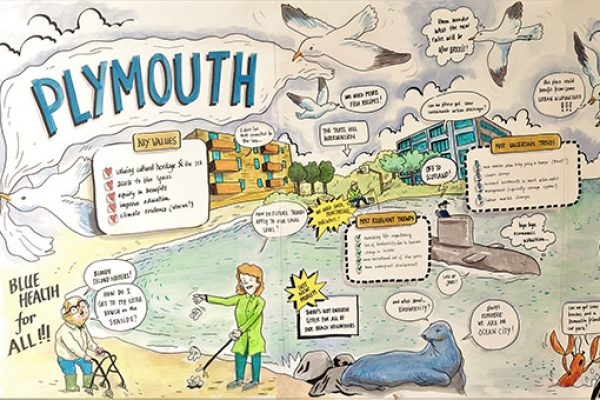Scenario workshop in Tallinn
Highlighting the value of blue space in cities can help us prepare for the future.
Take Estonia’s capital city of Tallinn for example. Tallinn’s lakes, river inlets, beaches and fishing harbour are enjoyed year-round by locals and tourists. With changes to the climate, technology, population and the economy, will these blue spaces still exist and be used in 25 years?
Assessing the value of blue space in Tallinn
We recently delivered a workshop in Tallinn, organised in partnership with the Estonian University of Life Sciences. The workshop participants included a range of experts in spatial planning, architecture, biodiversity, and epidemiology. Together we identified the values of blue space in Tallinn and the trends that will impact the city between now and 2040.

Visual notes from the workshop in Tallinn, you can view a large version here.
Seven trends Tallinn can prepare for
We identified the most important factors impacting the future of Tallinn’s blue space:
- Loss of protected environments and ecosystems
- Impacts of climate change
- Development of urban waterfronts
- Changing populations
- Digitalisation of society
- Dispersing population wealth
- Increasing life expectancy
Protecting the environment and access for all
The workshop raised two important values for the future of blue space in the city of Tallinn, preserving the environment (biodiversity) and protecting access for all. This knowledge will help us prepare for the challenges facing the city and help promote opportunities to protect it.
Collaborating to protect blue space
This workshop is the third in a series that BlueHealth researchers are hosting across European cities including Amsterdam, Plymouth, Barcelona, Tallinn, Stockholm and Thessaloniki. The workshops show the value of involving local stakeholders to help us understand the current value of blue space in European cities, so we can protect them for 2040 and beyond.
Read the full workshop summary for detailed descriptions of the key discussions.



